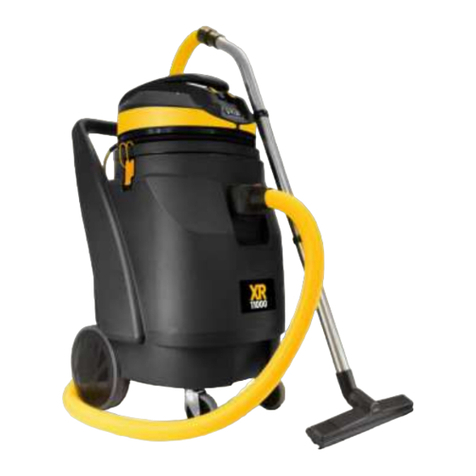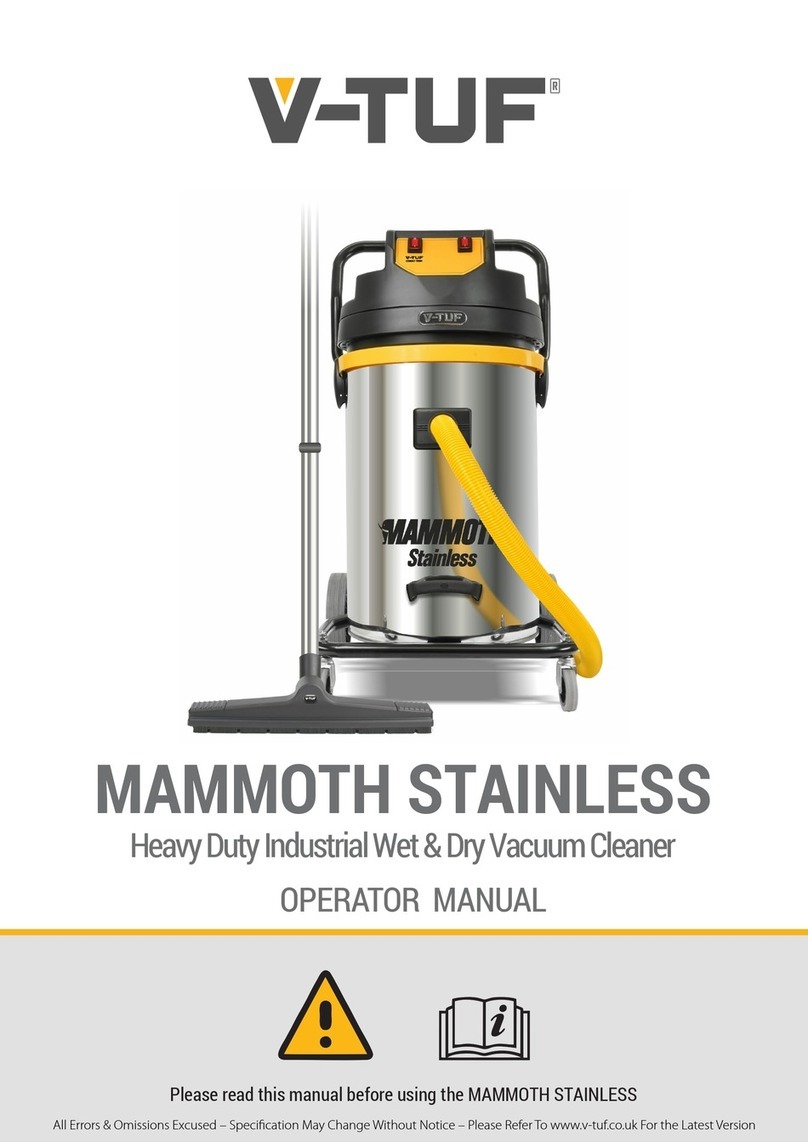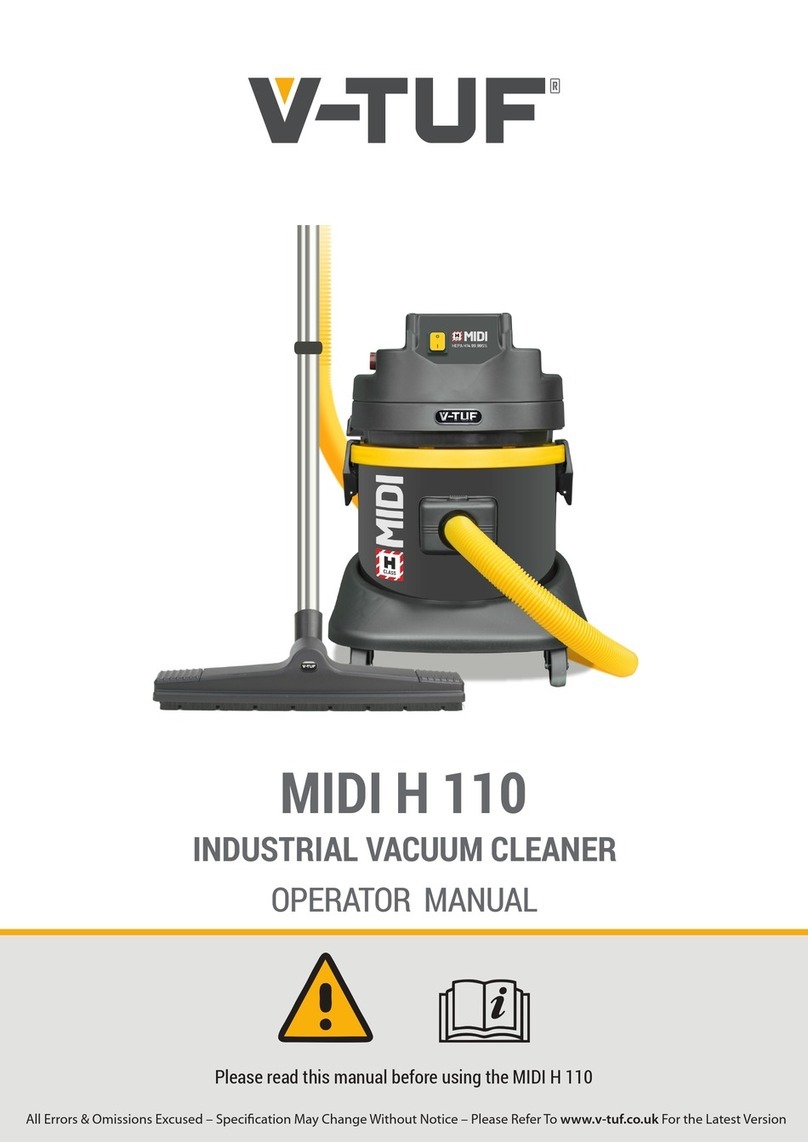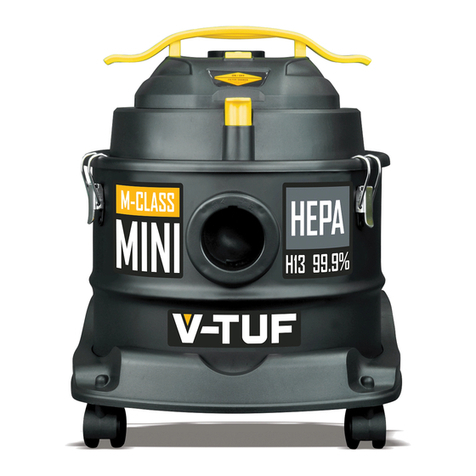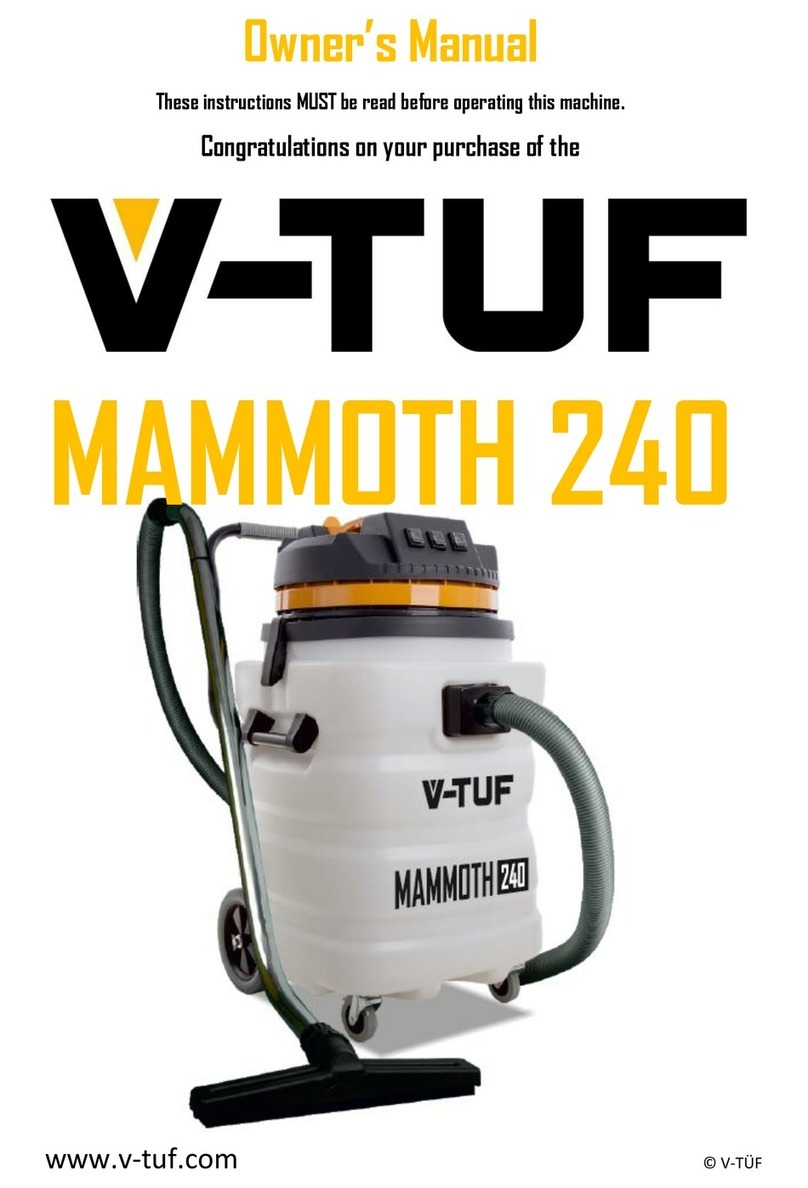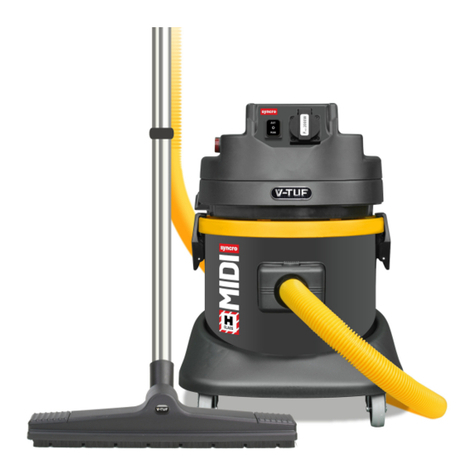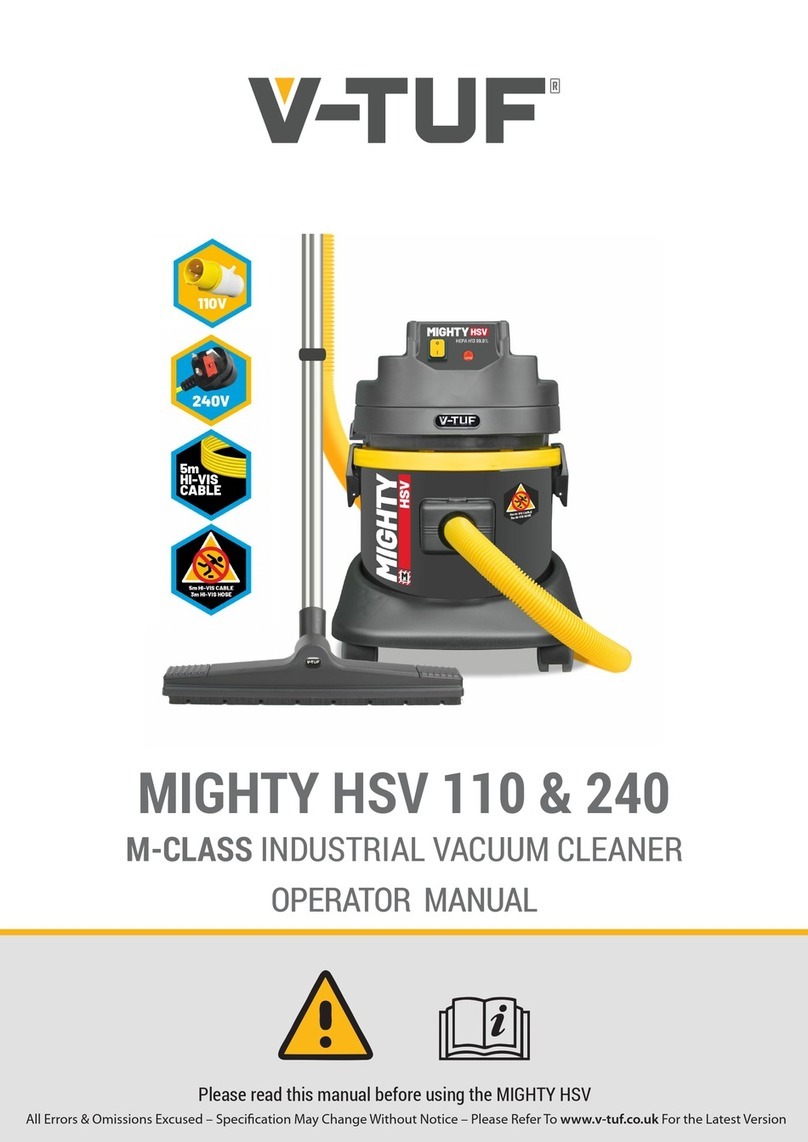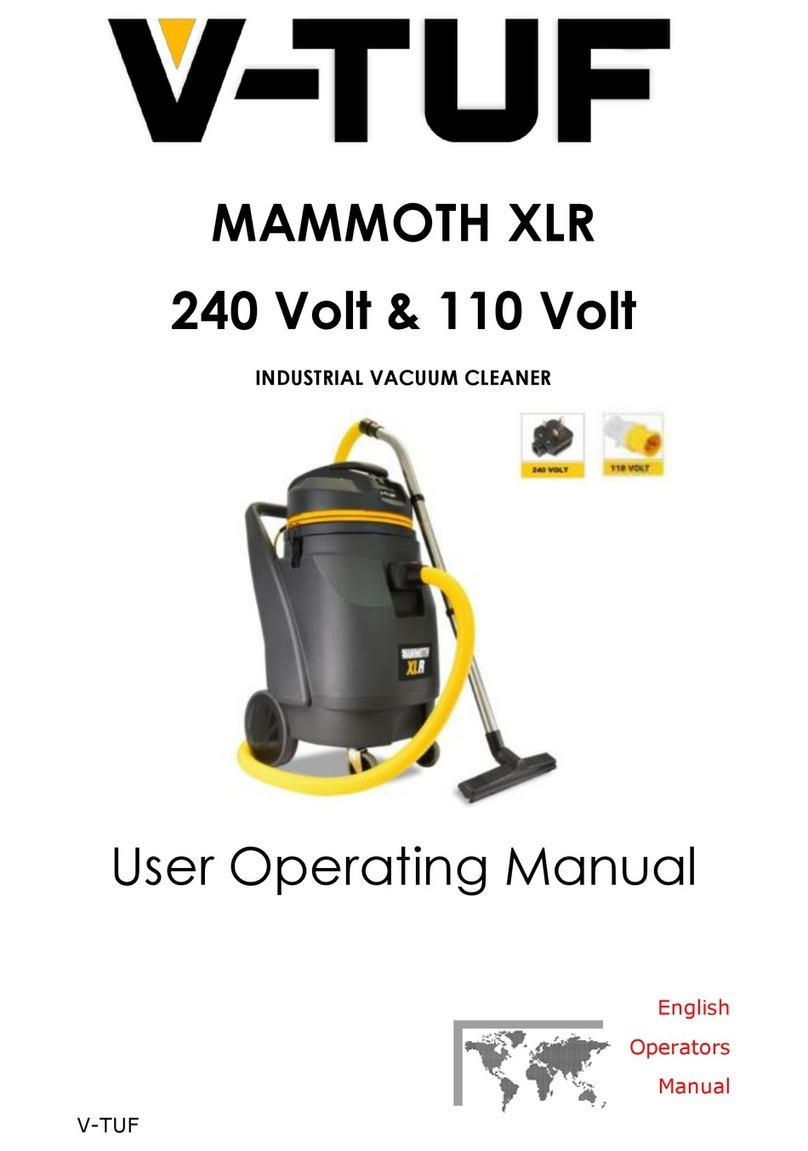
8
Maintenance, cleaning and repair
Only perform the maintenance work described in this booklet on the equipment. In case of uncertainty,
contact the dealer or an authorized service centre.
Before performing any cleaning or maintenance operations upon the device, remove both the electrical
and compressed air power supply cables. Treat the device in a responsible manner so as to avoid creating
situations which could be dangerous to both yourself, as well as to others.
A filtered, forced air ventilation system must be employed during maintenance activities. The user must wear
any appropriate safety accessories during such operations, especially respiratory protection. The environment
in which maintenance activities are to be performed must be decontaminated in order to prevent the
dispersion of hazardous substances into the surroundings.
When transporting the device away from or within an area that is contaminated with hazardous substances,
the external portion of the device must be vacuumed and wiped down with a cloth before sealing it in an
air-tight container.
Any parts which cannot be cleaned must be packaged in air-tight bags and/or disposed of in compliance
with the current regulations for the disposal of hazardous substances in the country of use.
The manufacturer requires that the vacuum be subjected to an annual technical inspection.
This inspection may be performed by an authorised distributor’s technician and must include the examination
of the aspiration filters, the air-tight seals, as well as the signalling components/indicators.
DESCRIPTIVE INFORMATION
Detailed use of the machine
ATTENTION The vacuum cleaner is suitable for extracting dry non-flammable dusts, wood dusts and any
hazardous dusts with MaK values 0.1mg/m³ ( category M dust ). Based on the hazards presented by the
dusts to be aspirated, the vacuum must be equipped with appropriate filters: see the following sections.
For the Pneumatic System:
The device is designed to function at pressures ranging from a minimum of 4 bar to a maximum of 15 bar.
Below 4 bar, the device’s automatic start-up function is not guaranteed.
Never exceed the 15 bar pressure limit.
BEFORE FIRST USE
Before using the device, check that:
No foreign elements are present within the container.
Ensure that the head if fastened down with the head clips. This guarantees an air-tight seal.
The relevant filters and bag have been installed. The bag is equipped with a membrane seal which must
be fitted over the internal slot of the tank intake. It also has a complete orifice seal tag which must be
applied once the used bag is removed from the tank intake for safe disposal. This is important to ensure
that the contained dust does not escape.
The hose is correctly connected to the tank.
the machine is connected to the correct electrical supply.
Vacuum assembly and testing
Before beginning to vacuum dusts with MaK values, check that the filters fit properly within
the device and that they are positioned correctly.
Initial working phase check
